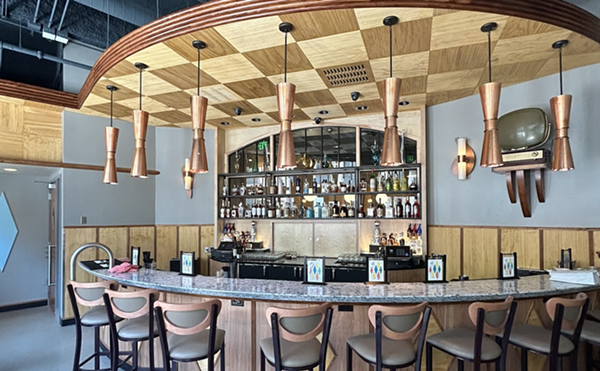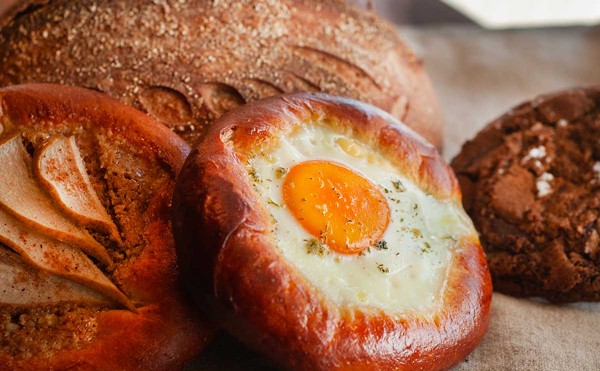Café Habana offers excellent, reasonably priced Cuban cuisine in a fun, funky-chic setting, along with Latin music and a full bar, in downtown Royal Oak’s ever-expanding restaurant hub.
The Caribbean nation’s food is simple, with Spanish and Central American influences, but substantial. Grilled meats dominate platos principales, enhanced by fresh and spicy marinades and sauces.
Carne asado ($11) is flank steak marinated in mojo, a combination of sour orange juice, garlic and cilantro. Dip the meat into the chimichurri sauce (parsley, cilantro, garlic, olive oil and red wine vinegar). It’s an outstanding merger: the charred-grilled meat with the zesty, fresh flavors of the dipping sauce.
Adobo is another wonderful spice combination, featuring garlic, cumin, oregano and lime juice. Pork adobo ($9) is coated with a hot chili pepper sauce and served with rice and black beans (the beans are great, soupy and sweet).
Mole is a wondrous combination, traditionally Mexican, in which dried, ground peppers are mixed with bitter chocolate. Here it is served on a boned, skinned chicken breast (very moist inside) with a sweet corn and mushroom relish. I had to remind our server about the relish, and I was glad I did — it provides a sweet respite from the strong, smoky flavors of mole.
Ropa vieja translates as old clothes. The dish began as a way to use a tough cut of meat, cooked until it falls apart in shreds. A spicy tomato sauce brings the dish together.
For vegetarians, there is a single choice: arepas, a delicate, thin pancake made with cornmeal. Sandwiched between the cakes is creamy goat cheese, garnished with pico de gallo and avocado.
In addition, there are five sandwiches and papas fritas (fries), including a traditional Cuban sandwich of roast pork, ham, swiss cheese, pickles, mayo and mustard, press-grilled on Cuban bread ($7). Breakfast is served daily.
One way that Café Habana maintains its desirable prices is that it offers nothing for free. Check out the items listed under “Mas.” If you want bread, it is $3 for four long, thin slices, served with chimichurri for dipping; $3 will also get you side dishes like grilled sweet corn or tostones. You don’t want to pass on the tostones, an interesting pancake of fried plantains served with mojo. The plantains are cut the long way, with the ends tucked back into a circle.
There are a few glitches — four of the dishes we ordered came without one or more ingredient. And Café Habana leaves a great deal of Cuban cuisine unexplored. One wonders, for example, why there is no fish on the menu. And with ingredients such as raspberry vinaigrette, one wonders how authentic the food is. Authentic or not, this is a restaurant that succeeds on many levels.
The long, narrow dining room features blackened cinder blocks with industrial lights and fans hanging from the high ceiling. The industrial/chic effect is softened by colorfully painted tabletops and booth dividers. The open kitchen is under the leadership of Chef Mindy Siane.
The drink of choice is mojitos ($4) — club soda with rum, sugar and lime poured over fresh mint — making a great argument for keeping fresh mint gardens active this summer.
Dessert was rice pudding with mangos. The consistency was like Chinese sticky rice (which is steamed in a banana leaf) rather than the creamy variety of my childhood. And we found no mango. I preferred the delicate flan we tried on another evening.
The restaurant shares a bar, cash register, rest rooms and owners with a new Belgian restaurant called Bastone. Plans include a third space to be opened this summer as a wine bar. The entrance to Café Habana is actually on Fifth Street, but there is no street number as yet.
Elissa Karg dines for Metro Times. E-mail [email protected].





